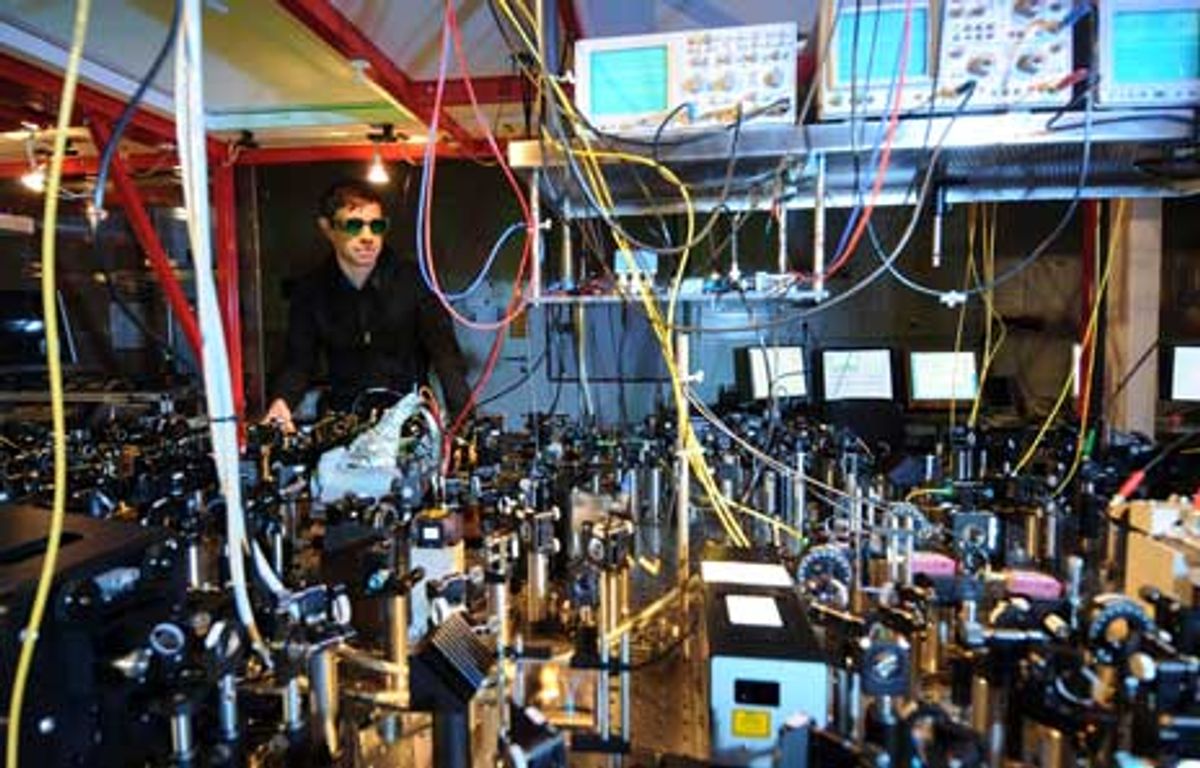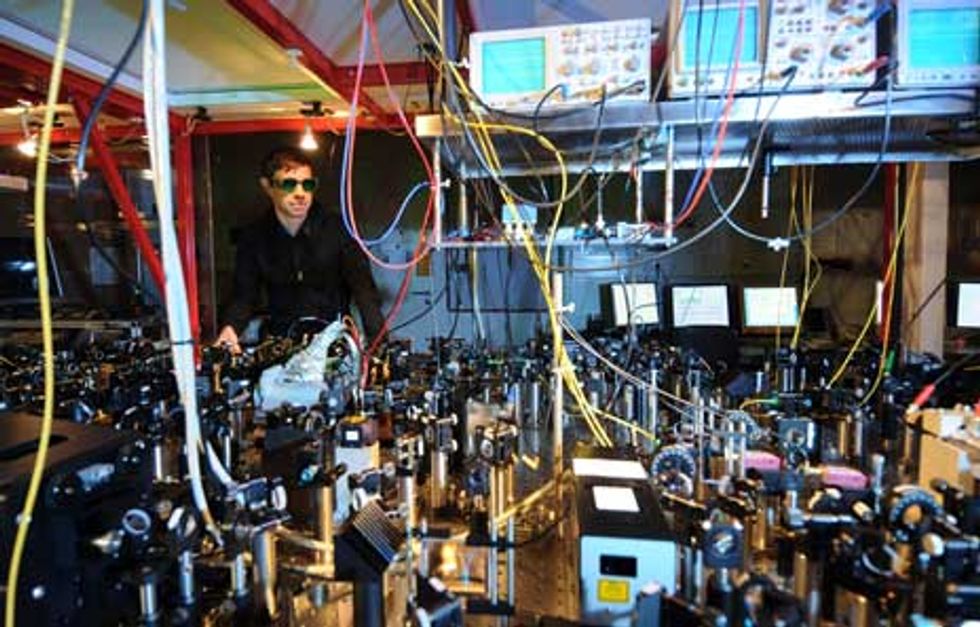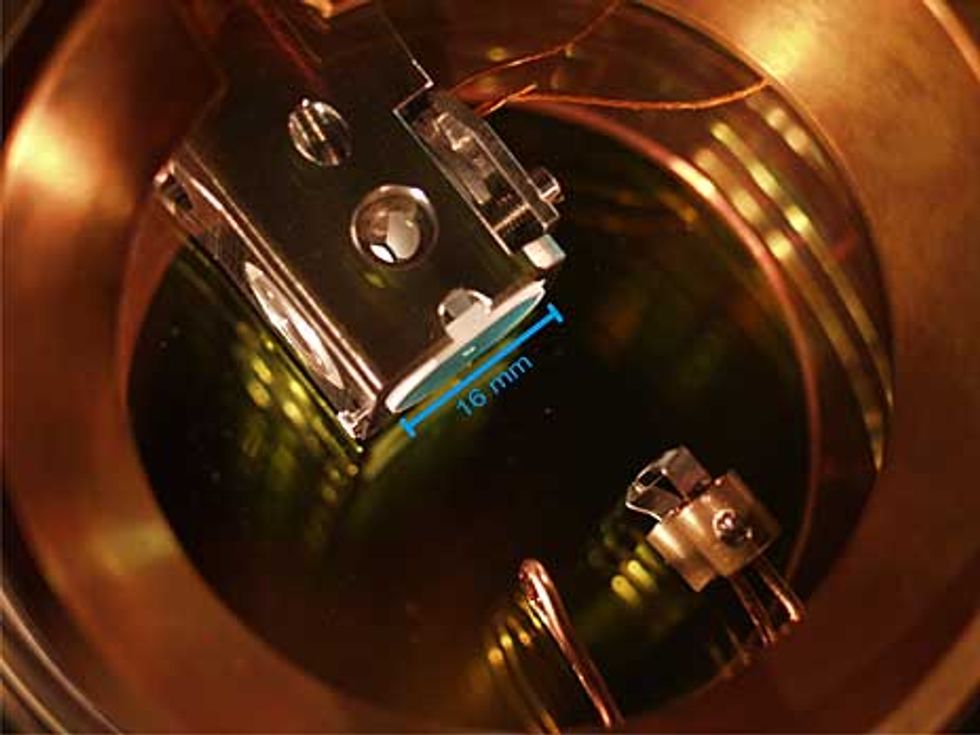14 May 2010—Physicists at the Max Planck Institute of Quantum Optics, led by Gerhard Rempe, have created a system based on a single atom that they’re calling a ”quantum optical transistor.” The transistor could someday serve as part of a quantum computer or as a node of a quantum data network.
”We’re doing what people in the Bell Laboratories did in the 1950s,” says Eden Figueroa, one of the physicists involved in the project. ”They were inventing the transistor, and people thought they were crazy. But 50 years later, everyone is using a laptop.” Now, he says, ”we’re inventing the quantum transistor that may be used in computers 30 years from now.”
Their process relies on a complex light manipulation technique called electromagnetically induced transparency (EIT). In EIT, one beam of light controls the properties of another, much as the gate voltage controls current through a regular transistor. The researchers demonstrated EIT through the mediation of a single atom, which is a first; previously the technique was applied to hundreds of thousands of atoms in a gas.
Normally, laser beams don’t interact with one another, but under certain conditions, you can force them to. The German researchers started by placing a rubidium atom in an optical cavity—two tiny mirrors spaced just half a millimeter apart. They aimed a laser into the cavity, tuning it so that the atom inside reflected it. They then fired a second laser of a different frequency, called the control laser, into the cavity at a right angle to the first. Tuning the second laser just so let them ”create the condition of transparency,” says Figueroa: The first laser’s light sailed right through. That gave the cavity system two states, transparent and opaque, analogous to the on-off states of a classical transistor.
An ideal quantum optical transistor would have a contrast of 100 percent between on and off states, but so far the contrast of experimental optical transistors has hovered around just a few percent.
The Max Planck researchers demonstrated a record contrast of 20 percent. And that’s ”a technical shortcoming, not a principle one,” according to Piet Schmidt, a professor of physics at Leibniz University Hannover, in Germany, who was not involved in the work. ”A new system could overcome it,” he says.
To get closer to 100 percent contrast, the researchers would need an even smaller cavity and increased interaction between the photons and the atom in the cavity.
Now that scientists have shown that EIT works with just one atom, this development could pave the way for storing and manipulating information on the quantum scale. Right now it’s difficult to share quantum information between different types of particles—like atoms and photons—because in ”talking” to each other they also interact with the environment and quickly lose their data.
”You could use this medium as a memory,” Figueroa says. This would work by sending light with some information, exchanging it between the light and atom through the EIT technique, and then retrieving the information on the other side.
That, in turn, could lead to a ”quantum Internet,” which would take advantage of many of these systems working together, says Christopher Monroe, a physics professor and fellow at the Joint Quantum Institute at the University of Maryland. Such a network could theoretically link quantum computers together, enable secure communications using quantum key distribution, or help share information for certain physics experiments and quantum computation applications.





